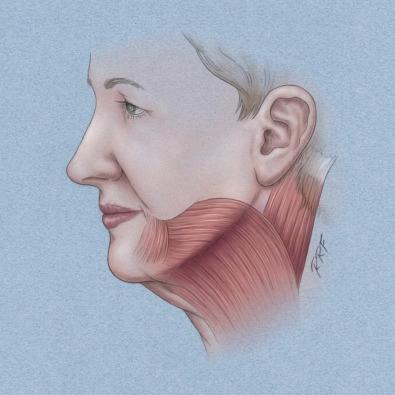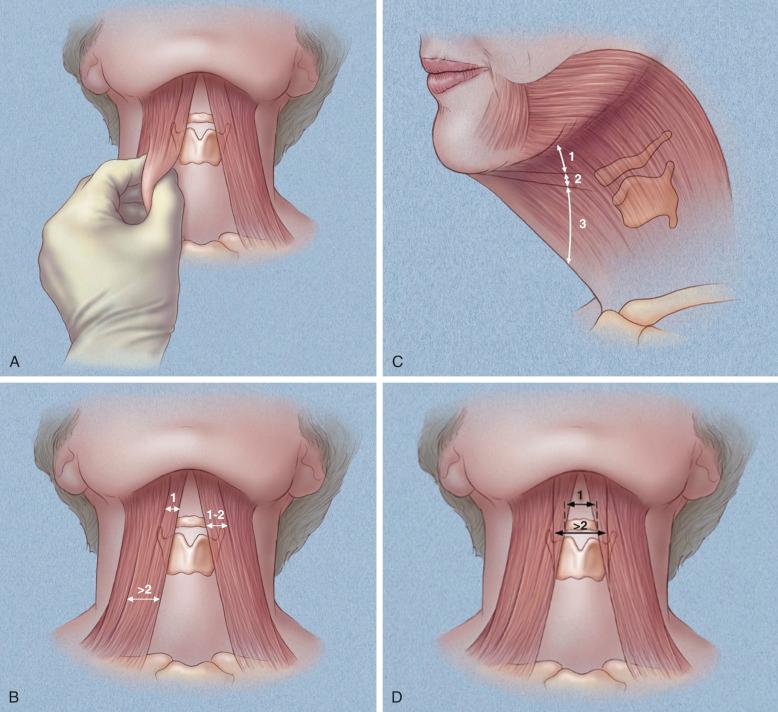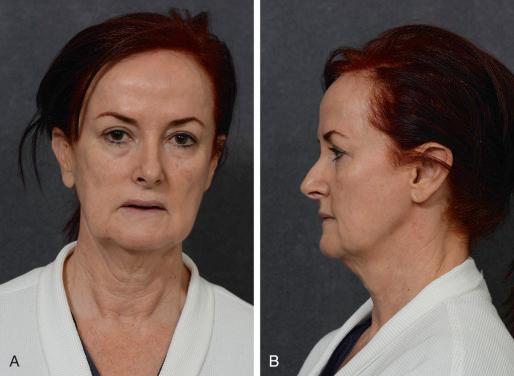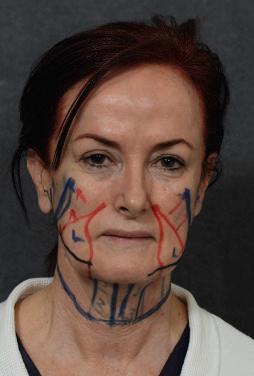Physical Address
304 North Cardinal St.
Dorchester Center, MA 02124
Aging in white individuals is accompanied by jowls, submental laxity, or fullness and laxity, with banding of the platysma muscles. This combination is often referred to as a turkey neck. Along with these changes, which begin in the early 40s, are skin laxity and horizontal creasing. There is a progressive downward and forward cascade of skin, fat, and muscles, obliterating the cervicomental angle and causing deep oblique horizontal creases. The laxity extends onto the chest, and there is an expressed dissatisfaction by the patient, especially when she or he notices the view in an oblique downward gaze or by lateral observation. The derogatory term of turkey neck or chook neck accompanies the patient's dissatisfaction with appearance ( Fig. 13.1 ).

In the overall approach that I have adopted to correct turkey neck, the contributory platysma muscle bands are relocated laterally, inferiorly, and anteriorly. The lateral approach and suspension alone are inadequate if the bands are thick and redundant. For that reason, I assess the thickness, descent of the bands, and distance between the bands in relaxation and movement. I quantitate these and then determine whether a direct submental anterior approach will be needed to eradicate the bands ( Fig. 13.2 ). The treatment of turkey neck aims to reestablish the cervicomental angle, reduce skin laxity, expose the sternomastoid throughout its height, and firm and tone the neck skin from the clavicle to the mandible, complying with Ellenbogen and Karlin's classic description of the youthful neck.

The patient shown here, TR ( Fig. 13.3 ), was a 56-year-old, former first-class international flight attendant, height 169 cm, weight 60 kg, and nonsmoker, with moderate social alcohol consumption. Her complaint in consultation was mainly her lax neck and jowls. She demonstrated her desire for rejuvenation with a finger lift, displacing the facial and neck tissues upward and obliquely. She was an attractive woman who was popular and always had an authoritative role, but her confidence was waning. Her only previous cosmetic treatments had been botulinum toxin A (Botox) injections, mainly to the forehead, and one Thermage (Solta Medical, Hayward, CA) treatment to the neck and jowls.

The key to assessing the neck is a thorough clinical evaluation of the fat, skin, and platysma muscles and evaluation of how each component contributes to the neck deformity. The patient is asked to contract her or his platysma muscles and grimace; the tone in the platysma is assessed by palpation. This can be difficult in the more obese patient.
Neck skin laxity is assessed, together with observation of the horizontal creases and how the jowls contribute to the loss of definition of the mandible. The overall projection of the forehead, nose, lips, and chin in profile should be well balanced ( Fig. 13.4 ).

Become a Clinical Tree membership for Full access and enjoy Unlimited articles
If you are a member. Log in here